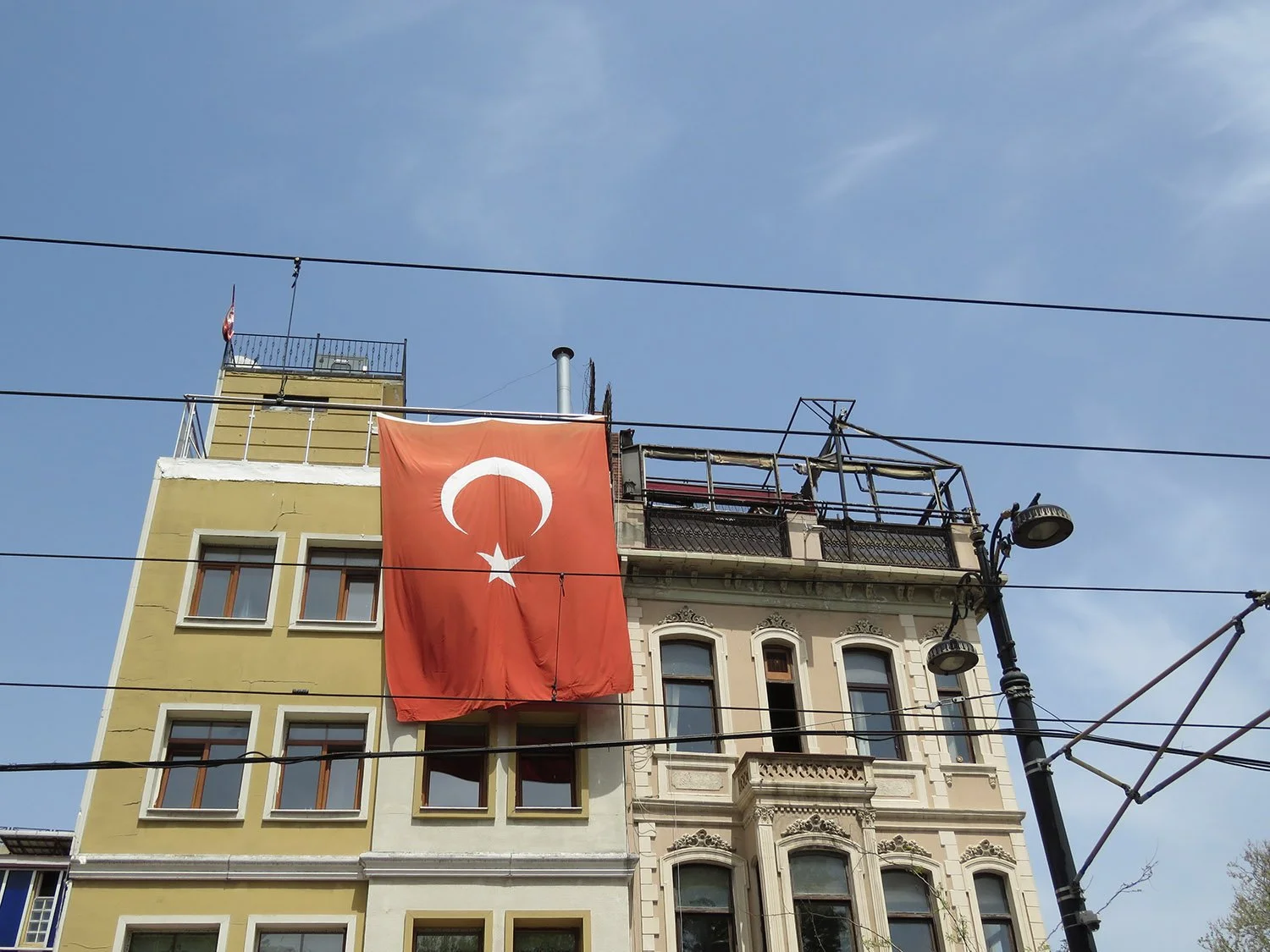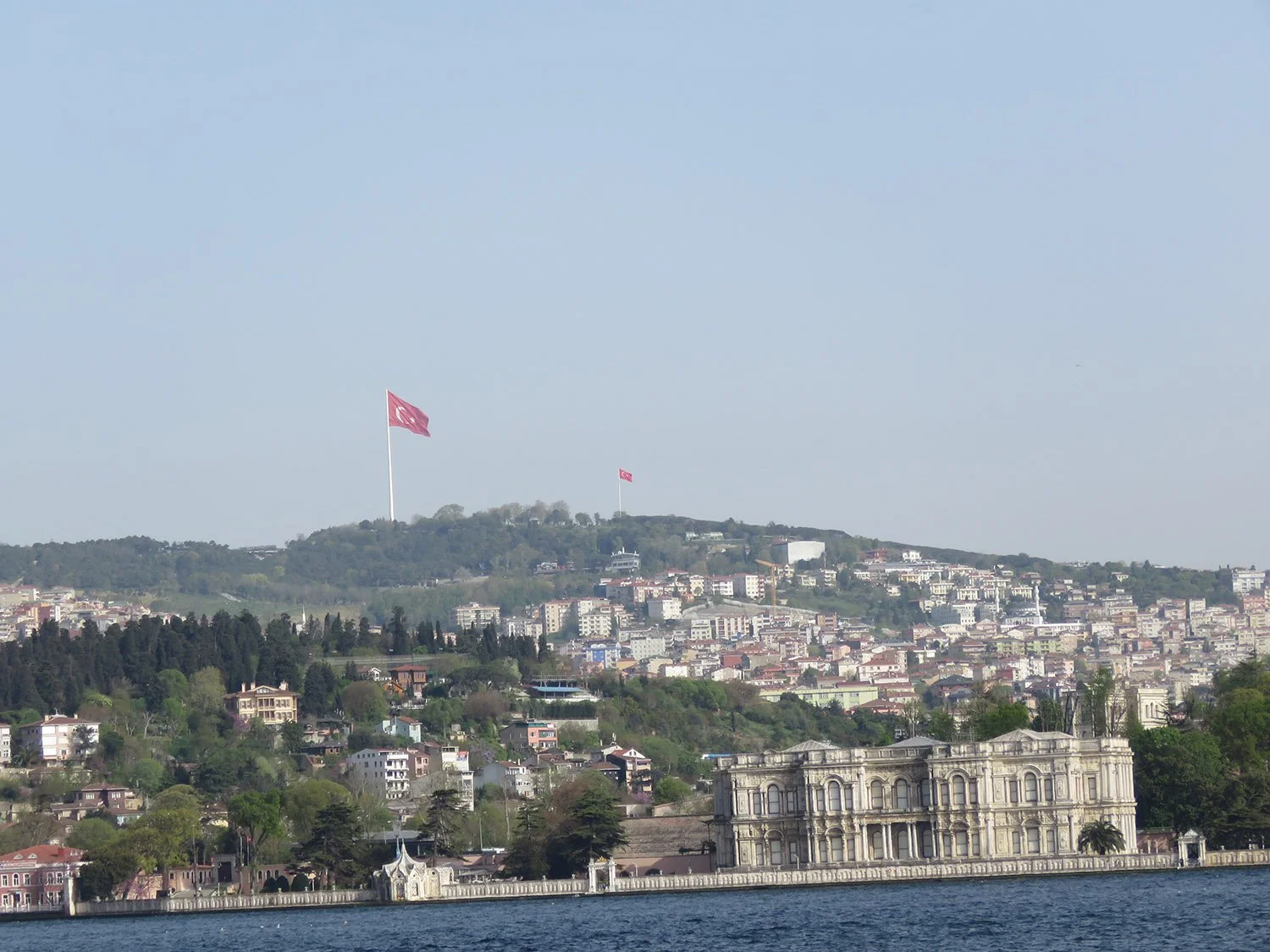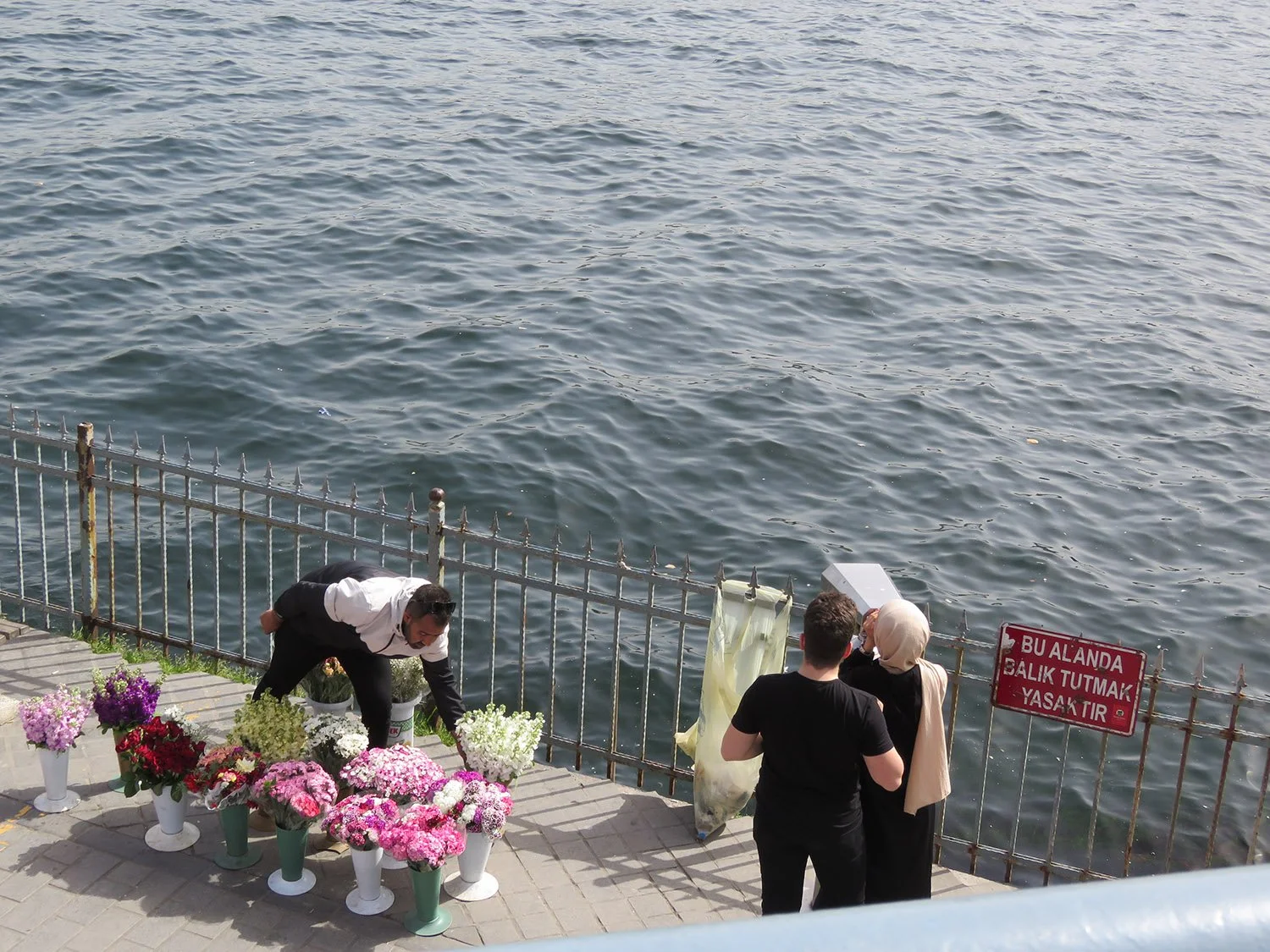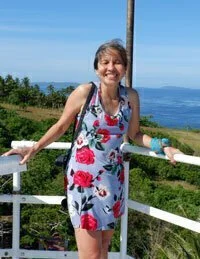Romancing Istanbul
/In my mind, my future groom would propose to me by the Galata Bridge, right by the intersecting waters of the Golden Horn, the Bosphorous, and the Marmara. It is a warm day in April, adding a rosy tint on my cheeks.
View of the Galata Bridge and Tower from the Bosphorous (Photo by Criselda Yabes)
I knew where Turkey stood in geopolitics and, as much as possible, when it came to being a tourist, I avoided reading travel guides. I didn’t want to be denied any surprises. Going to Turkey finally happened: I had a three-day layover flying Turkish Airlines en route to Manila from Europe, and with only an additional one hundred dollars, I could have my mini-holiday.
If the universe would humor me, surely a gentleman would incarnate from my dreams.
On the day I arrived, flying in from Athens, I wasn’t too sure. From the airport, I took a taxi. There was no train into the city. Buses were available but looked complicated. Traffic was as bad as it was in Manila. Some corners, in fact, reminded of the gritty flank of the Quiapo church, but the approach to Galata Bridge was different. I eagerly anticipated the start of a memorable trip.
The hotel I booked on the Internet, Fehmi Bey, did not show in the photos that it was authentically antique (meaning, it’s old and musty). The man at the front desk was a little grumpy, so unlike the favorable descriptions on Booking.com. Never mind, the room was comfortable and the free breakfast of Mediterranean food was copious, and it was perfect for a location at the very heart of the bygone empire.
Walking around aimlessly on the first evening, I didn’t realize until the next morning that a few steps up the corner would lead me to the first place I so wanted to see: the Hagia Sofia.
A few months after his trip, I watched on Netflix a docuseries on the siege of Constantinople in the 15th century Byzantine era, which was the heart of the ancient city of Istanbul where I stayed, called Fatih – which means conqueror. That conqueror was Sultan Mehmet, who beat the Romans to build his own Ottoman Empire, renaming the city Istanbul. The first thing he did upon entering the walls of the vanquished city was to walk through the doors of the Hagia Sofia.
A typical building in Fatih (the old Constantinople) (Photo by Criselda Yabes)
I thought that was cool. The dome speaks of the city’s grandeur, as I had imagined, what with all the photos I had seen on the Internet. It was a church that was turned into a mosque, and so when we entered it, we, at least the women, had to wear a scarf and remove our shoes. I sat on the floor for a long time marveling at the architecture, noticing the angels above the ceiling, by the hanging lamps and the glass mosaic. I’d go back to Turkey if only to see it once more.
Inside the Hagia Sofia (Photo by Criselda Yabes)
In late April, it was nearing the end of Ramadan. Across the park from the Hagia Sofia was the Blue Mosque named after Sultan Mehmet himself. At dusk, the muezzins from both sides chanted answering prayers. Families were out breaking their fast, having picnics in the gardens. Because of the atmosphere, Istanbul did not fail.
The park by the Hagia Sofia (Photo by Criselda Yabes)
This was a scene my man, attuned to a culture’s authenticity, would have liked. And then he would take me on a boat ride on the Bosphorous, not paying a hefty price for the “tours” but waiting for the common people’s ride at the port by the Galata Bridge. He would buy bread from the street vendor, slather it with cream cheese to snack on during the length of the tour.
There were grand buildings along the banks of the European side, palaces built from wealth of the Ottoman days, now joined by new five-star hotels, high-end apartments and boutiques. This was the part of the city that Orhan Pamuk wrote about (so yes, I just had to read Istanbul: Memories and the City before this trip and only because I have always read anything that was written by Pamuk.)
It might have been his books, not mine, that pushed me to finally go to Istanbul with the romantic meeting I had in mind. I wanted to go to the streets where he took his first love (read Istanbul’s last chapter) but that was not meant to be; on the map it was further up the hilly side, in what seemed to be a secluded neighborhood. Instead I went to his Museum of Innocence, named after the title of one of his books, on my second day.
That necessitated taking the tram from Fatih, from the station called Sultan Mehmet. A nice woman helped with directions and getting tickets from the machine. The neighborhood was gentrified. I walked up and down and took turns here and there to reach Taksim Square, the site of political demonstrations, but when I got there, there were mainly girls taking selfies in seductive poses. A cobbled pedestrian street off it, Istiklal, promised shopping. I guess you might say it was their Place de la Concorde leading up to the Champs Elysee. Right at the end of the road was the Galata Tower – and again, having watched the docuseries, I was thrilled that this was a Genoese trading center whose surrounding trees Sultan Mehmet tore down to reach the Golden Horn, which was critical to breaking through the frontlines of the Romans.
I didn’t climb the tower. I went straight down to the bridge where a line of men with rods angled for fish. I sat on a bench by the foot of the bridge, under which was a layered structure for restaurants, no doubt built for tourists. I didn’t want to be there. I liked sitting on the bench, listening to other people talk in different languages, and here I’d imagine would be the spot where the man I would marry would propose to me.
On the third day I thought about going farther from Fatih. Someone at the hotel suggested the tulip fields I could explore. But I missed the bus and, in the process, discovered the grand and magnificent Dolmabahce Palace, the Ottoman mosque I had espied from the Bosphorous tour. Inside, I paid no attention to the exhibits and enjoyed watching instead school children on excursion having the time of their life, playing and laughing.
Dolmabahce Palace from the Bosphorous (Photo by Criselda Yabes)
Leaving the palace, I had a fight with a taxi driver and the traffic was bad. So I decided it was best to return to Fatih and got off at the tram station before the Sultan Mehmet stop. I should have just gone to Pamuk’s house in Nisantasi off the Taksim Square. He wouldn’t be there, of course. The gossip was that he was with his Indian girlfriend on an island. That was old news; he had actually just married his longtime girlfriend, a couple of weeks before I went on this trip. Obviously he was not in my dream.
Taksim Square, site of political demonstrations (Photo by Criselda Yabes)
Getting off the tram, I walked aimlessly into a garden, and there were tulips everywhere by the grounds of the Topkapi Palace. This I didn’t know was the official residence of the sultans, Sultan Mehmet himself being the first occupant. So I didn’t have to go far to see the tulips, highly cultivated for the pleasure of the sultan, and the laws are strict when it comes to buying and selling them outside of the capital. I sat on the grass to collect my thoughts, the sun staying with me all throughout these three days in Istanbul. I noticed sunburn on my feet.
The tulips were so colorful, they matched my ruffled handwoven skirt. I’m not much of a flower person, but I do remember there was an old man selling assorted flowers arranged in plastic buckets by the Galata Bridge. I liked imagining that the man proposing to me did not forget to buy a rose from the old man before he walked over to the bench where I was sitting watching the waves roll between Europe and Asia.
Flower seller by the Galata Bridge (Photo by Criselda Yabes)
Criselda Yabes is a writer and journalist based in Manila. Her most recent books include Crying Mountain (Penguin SEA) on the 1970s rebellion in Mindanao and Broken Islands (Ateneo de Manila University Press) set in the Visayas in the aftermath of Typhoon Haiyan.
More articles from Criselda Yabes










